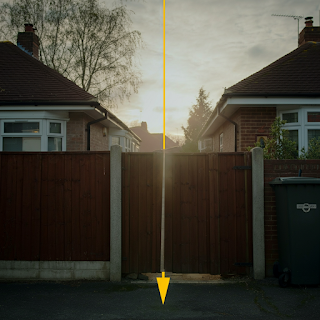Property boundary disputes can be frustrating and stressful, but with the right knowledge and approach, homeowners can address these issues effectively. This guide will walk you through how property boundaries are identified, why clear boundaries matter, steps to prevent disputes, and how to resolve them if they arise. By being proactive and informed, you can protect your property and safeguard your peace of mind.
How Are Property Boundaries Identified?
Property boundaries in England are typically determined through title deeds and plans registered with HM Land Registry. Here’s what you need to know:
- Registered PropertiesFor most registered properties, the boundary is shown on a title plan, which overlays the property lines onto an Ordnance Survey map. However, these maps are not always precise, as they rely on scaling rather than exact measurements.
- Unregistered Properties or Older DeedsIf your property isn’t registered, boundaries may be described in older deeds using measurements or natural markers like trees or hedges. Over time, these markers could disappear or become unclear, increasing the likelihood of disputes.
- Ambiguities and InterpretationEven with official plans, disputes can arise due to varying interpretations of boundary lines. For instance, a fence may not match the line shown on the map, leading to confusion.
Practical Tip: Always keep a copy of your title deeds and check them for detailed notes on boundary positions or agreements with previous owners or neighbours.
Why Is Establishing the Boundary Important?
Clear property boundaries are essential for avoiding misunderstandings and ensuring legal clarity. Here’s why it matters:
- Ownership ClarityDisputes can create uncertainty about who legally owns a certain piece of land, leading to prolonged conflicts.
- Impact on Sale and Property ValueProperties with unresolved disputes may lose value or fail to attract buyers due to the perceived legal risk.
- Development PermissionsWithout clear boundaries, making improvements like extensions or fences might be delayed or even blocked.
- Peace of MindBoundary disputes often feel personal. Resolving them promptly can help maintain good neighbour relations and reduce stress.
Practical Tip: If you plan any construction or renovation, confirm your boundaries beforehand to avoid encroaching on your neighbour’s property.
Proactive Steps to Avoid Boundary Disputes
Taking precautions early can save you hassle later. Here’s how homeowners can proactively avoid disputes:
- Register Your Title with HM Land RegistryIf your property isn’t registered, do it now. This creates an official record of your boundary information, often reducing ambiguity in the future.
- Conduct Regular Boundary ChecksWalk your property periodically to make sure physical markers like fences or walls align with your legal boundaries. If problem areas exist, address them before tensions build.
- Maintain BoundariesKeep fences, hedges, or other markers in good condition. Damaged or neglected markers can lead to disagreements over their original placement.
- Address Issues ImmediatelyIf you notice encroachments (like a neighbour building on your land), act quickly. Delays may be interpreted as acceptance, making it harder to reclaim your property later.
Practical Tip: Keep a clear, polite channel of communication open with your neighbours. A small issue can often be fixed with a simple, friendly conversation.
What to Do If You’re in a Dispute
When disputes arise, it’s important to remain calm and consider alternatives before jumping into legal action.
1. Start with Communication
Many disputes are born from misunderstandings. Speaking directly with your neighbour can often resolve the issue without escalation. Share your title deeds and maps to clarify boundary positions.
Practical Tip: Approach the conversation diplomatically. Avoid accusations or inflammatory language; focus on finding a solution.
2. Consider Mediation
Mediation involves a neutral third party helping you and your neighbour agree on a resolution. It’s less confrontational and costly than court proceedings.
Practical Tip: Mediation can be arranged privately, or you can contact organisations like the Royal Institution of Chartered Surveyors (RICS) for guidance.
3. Seek Legal Advice
If communication fails, consult a solicitor. They can send a formal letter to your neighbour, which may encourage resolution. Solicitor letters often carry legal weight and might prevent further escalation.
Practical Tip: Look for solicitors familiar with property law to ensure tailored advice.
What Happens If Your Dispute Goes to Court?
When all else fails, court proceedings may be your only option. Here’s what you need to know:
- Court DeterminationA judge will review evidence (including title deeds, plans, and expert reports) to rule on the boundary’s location. If your claim is successful, they may order your neighbour to remove encroachments.
- TimelineThe process can take several months to over a year, depending on the case’s complexity. Be prepared for delays and associated costs.
- Expert EvidenceCourts often require a report from a chartered surveyor to provide precise boundary details. This evidence can carry significant weight in the final decision.
- Rectification of ErrorsIf the Land Registry title has errors, you can apply for rectification to correct it officially. This step may be separate from the court’s determination.
Practical Tip: Litigation can be expensive, so weigh the costs carefully. A strong legal case with expert support is key to a successful outcome.
Protect Your Land and Peace of Mind
Boundary disputes can seem overwhelming, but with preparation and a level-headed approach, they can often be resolved effectively. Here’s how you can protect your property and avoid unnecessary stress:
- Stay ProactiveRegularly review your title deeds, maintain fences or markers, and address potential disputes early.
- Seek SupportDon’t hesitate to consult experts, whether they’re surveyors for boundary clarification or solicitors for legal advice.
- Opt for Dialogue FirstCourt should be a last resort. Try to resolve issues through communication and mediation before escalating.
Practical Tip: Keep records of all communications, agreements, and actions related to boundary issues. These can be valuable if legal proceedings are necessary.
By understanding your property’s boundaries and taking a proactive stance, you can confidently handle any challenges that arise. Remember, your home is one of your most significant investments, and protecting it begins with clear boundaries and good neighbourly relations.




